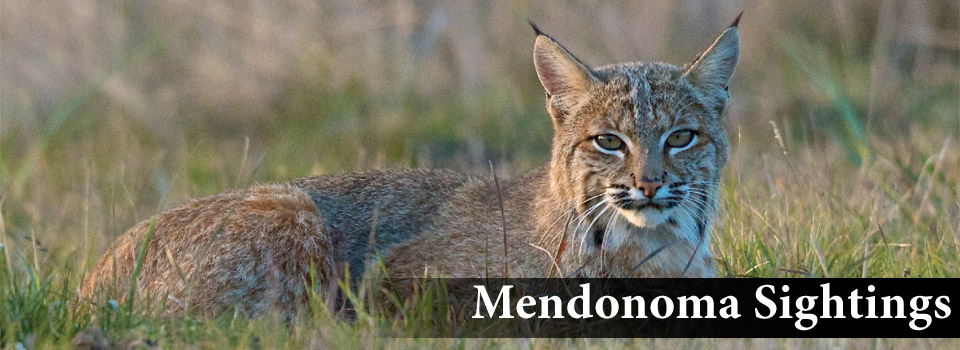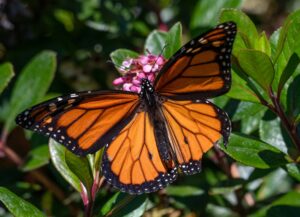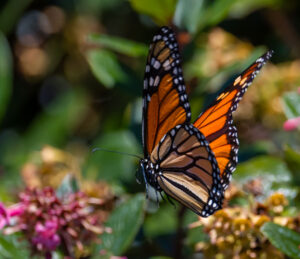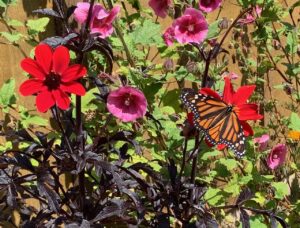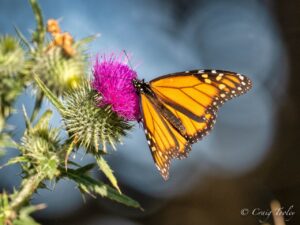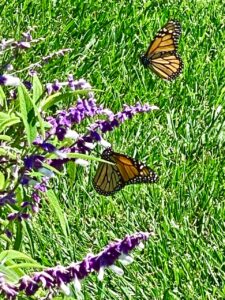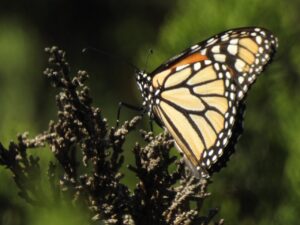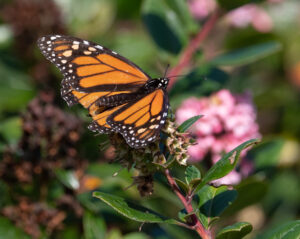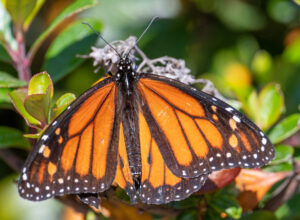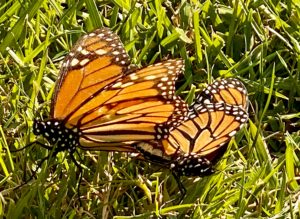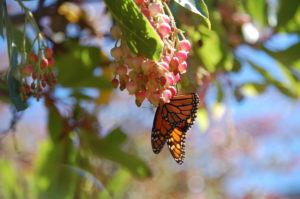Just in time for Autumn, Monarch Butterflies are beginning to grace us with their presence. They travel here to feed before their long migration southward. Paul Brewer recently photographed several in his Gualala garden.
See the two black dots on the Monarch on the left, on his lower wings? That tells you it's a male.
These Monarchs are the Methuselah generation, the long-lived generation that makes the fall migration.
Thanks to Paul for allowing me to share his photos with you here. You can see Paul's nature photographs displayed at the Gualala Arts Dolphin Gallery. Here's the link to their website: https://gualalaarts.org/dolphin-gallery/
The day started out partly-sunny, but for the first time in weeks, smoke has drifted down from the fires in far northern California and Oregon.
